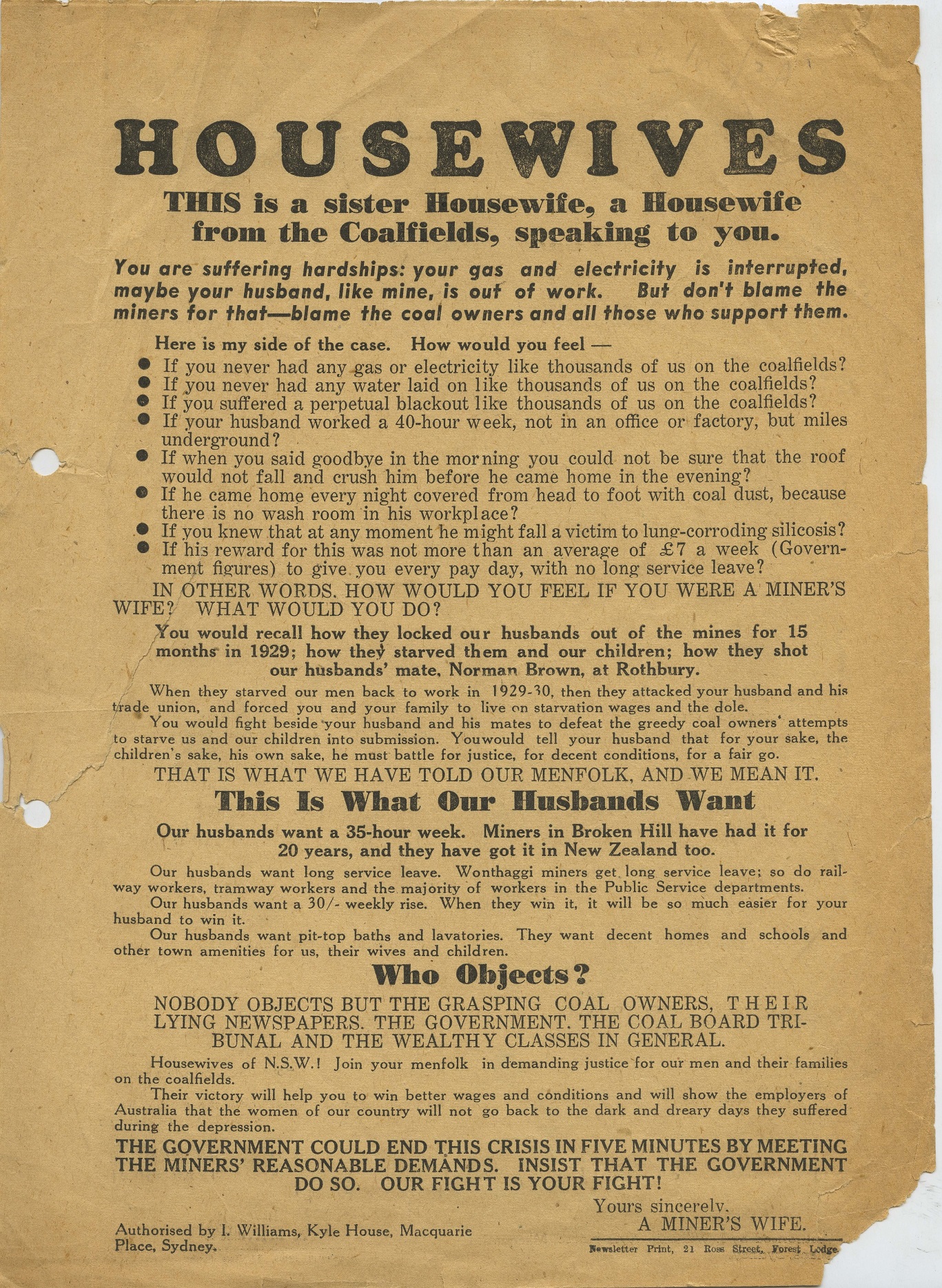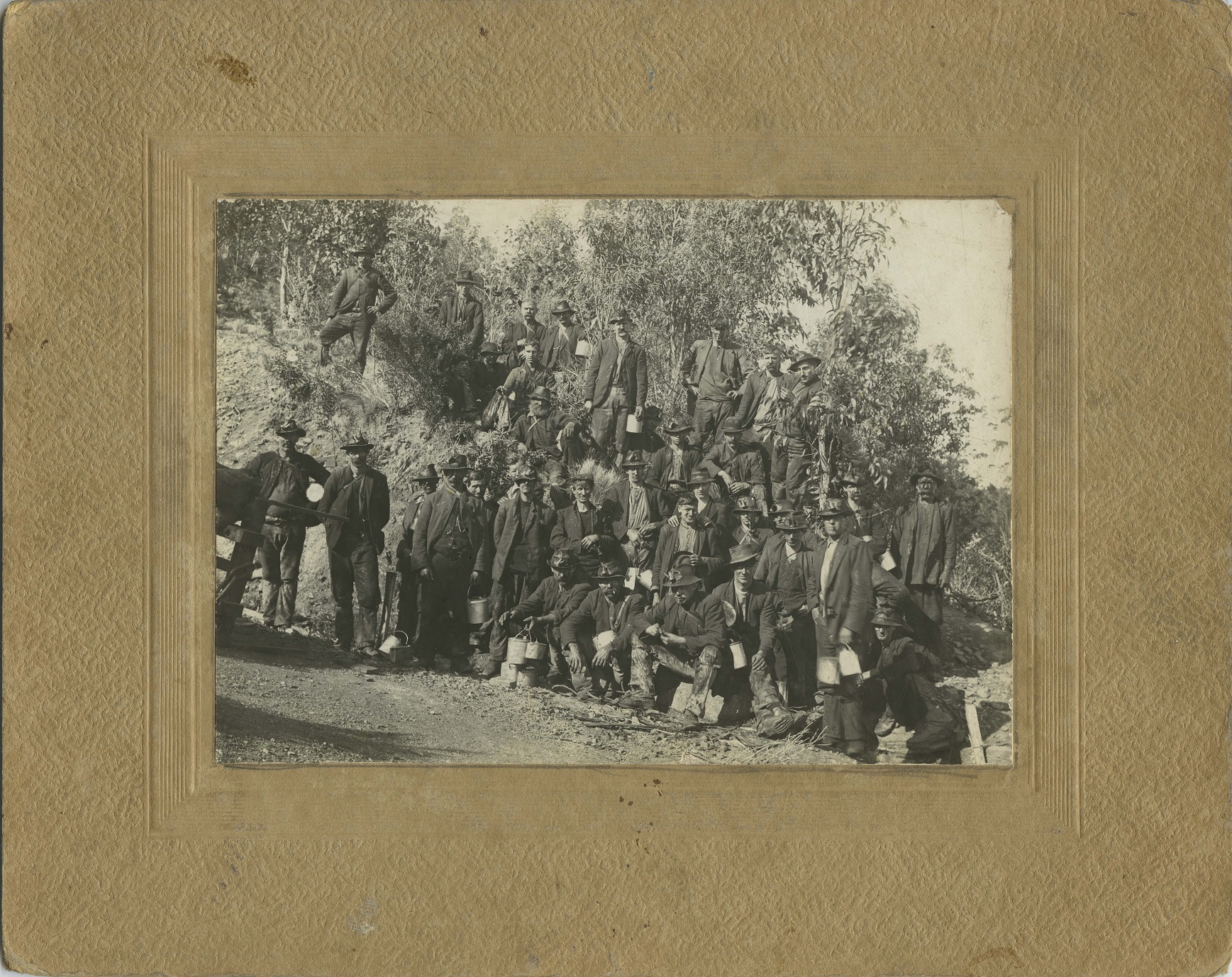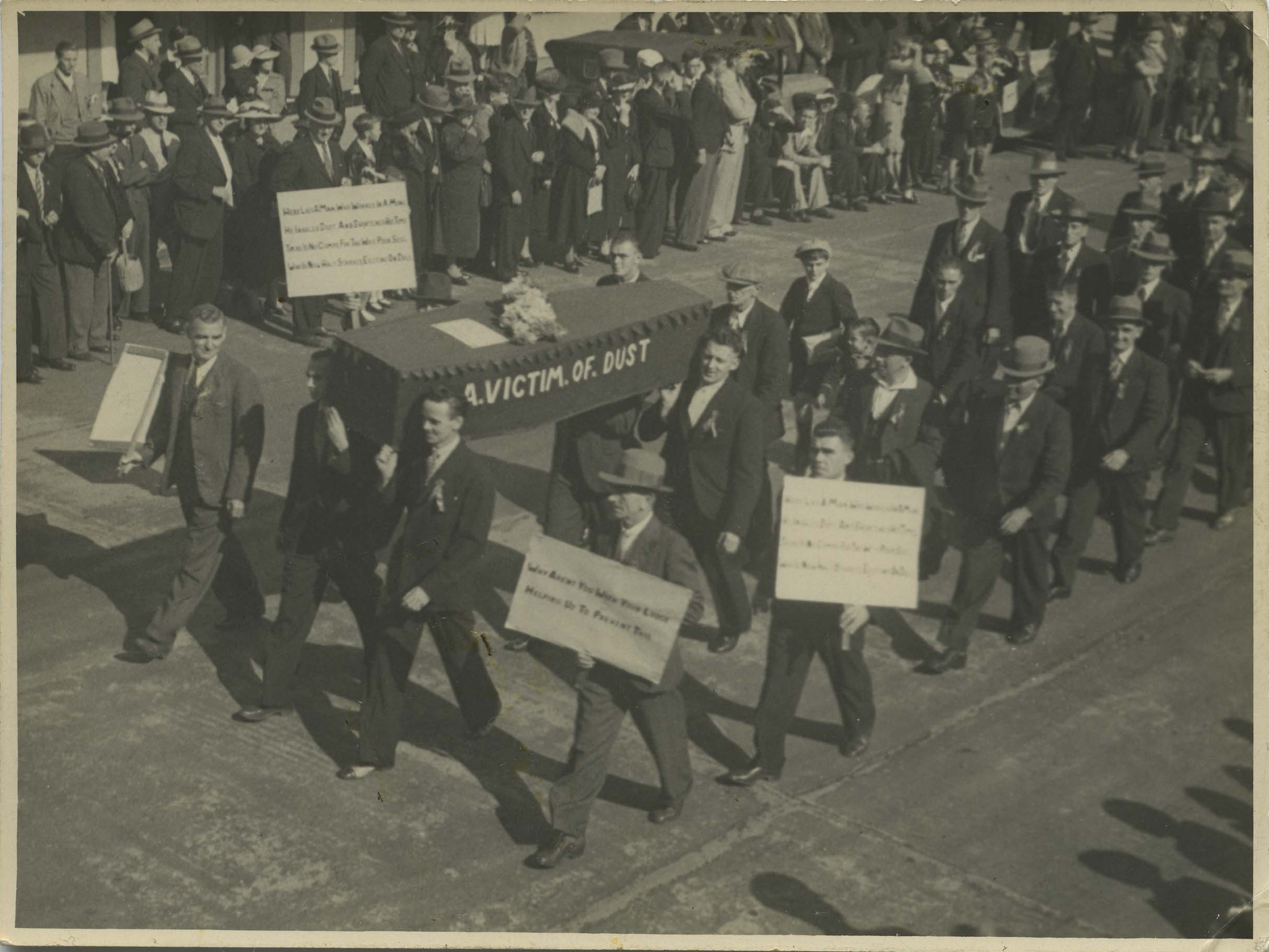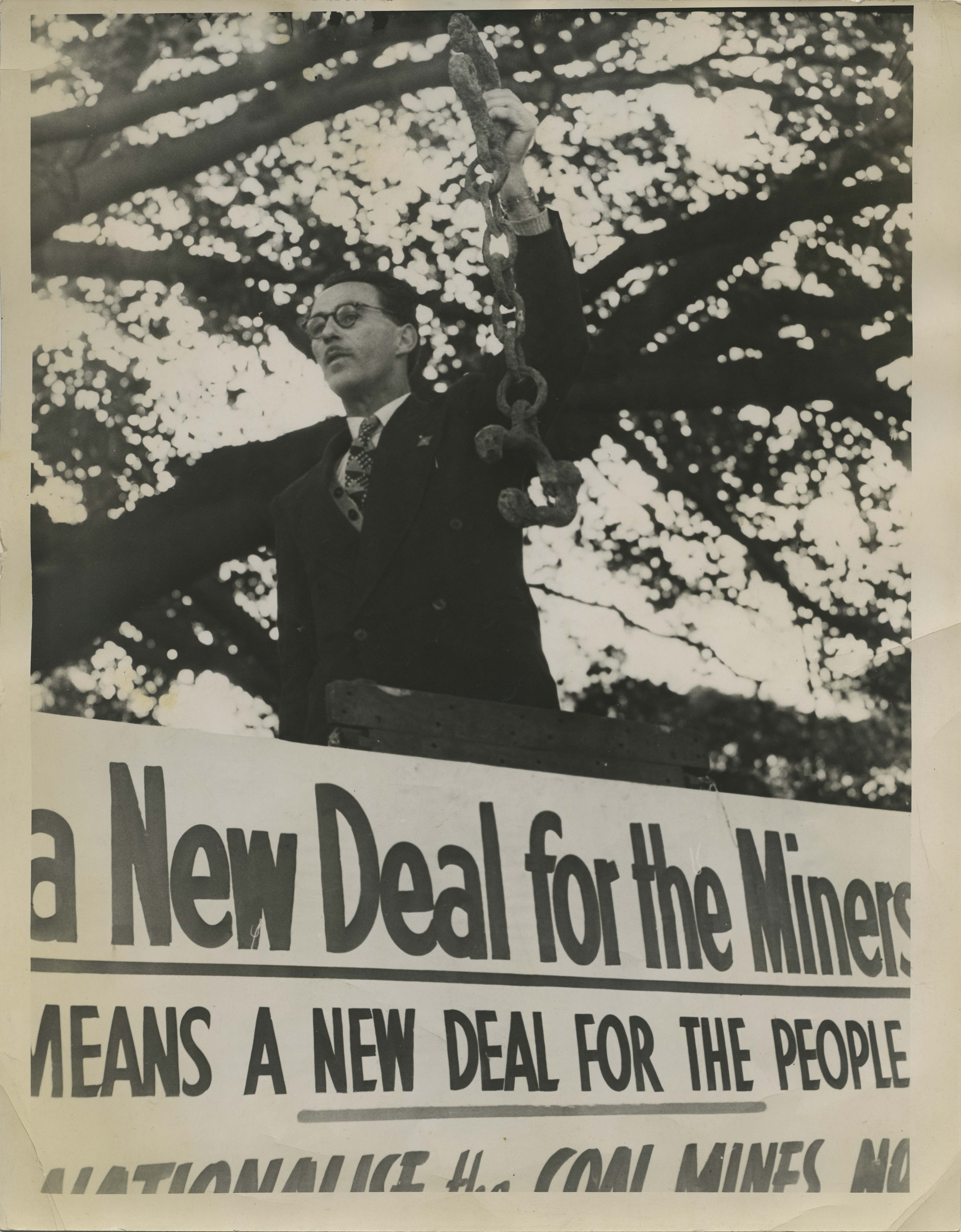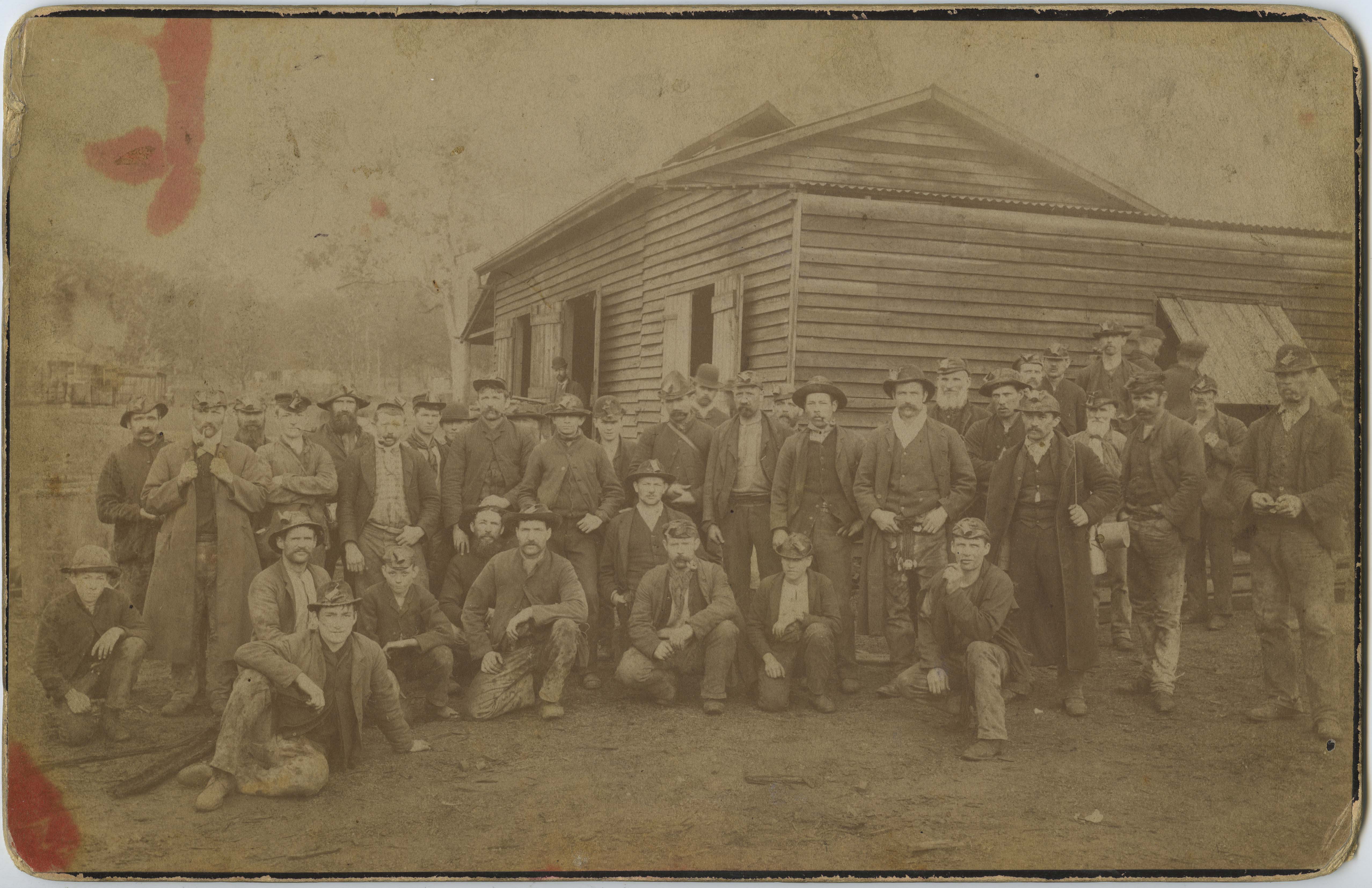Coal and Shale Miners
Coal and Shale Miners
Mining and mining unions have a long history in Australia, with the first discovery of coal dating back to the 1790s and the earliest recorded mining operations in the early 1800s in the area known as Coal River, near Newcastle. Throughout the early 1800s, several major mining operators established themselves in the Newcastle area and by the 1860s production in the area had reached close to 477,000 tonnes.
Between the 1820s and late 1800s mining operations were established in other areas of NSW, notably near Wollongong, Lithgow and Broken Hill, as well as in Queensland, Victoria, Tasmania and Western Australia.
Early miners in the Newcastle and Hunter Valley areas were convicts who worked under appalling conditions. By the 1840s, with the abolition of convictism, mining operators such as the Australian Agricultural Company began to import workers from Britain and it was not long before these miners began to agitate for better pay and conditions. By 1860, unionism began to take shape and the Hunter River District Coalminers' Mutual Protective Association was formed. Strike action became common as miners struggled against cuts to wages and dangerous working conditions.
Other mining unions began to form including the Lithgow Miners’ Mutual Protective Association (originally formed as the Lily of the Vale Lodge in 1878), Barrier Miners’ Association (formed in Broken Hill in 1884) and the Illawarra Miners' Mutual Protective Association (1885).
From 1912 there was growing interest in forming a nation-wide organisation. In 1913 the Victorians made the first move by changing their name by ballot from the Victorian Coal Miners’ Association to the Australasian Coal Miners’ Association.
In 1915 delegates from mining unions representing Newcastle, Western District, Illawarra District and the Victorian and Tasmanian District met to discuss the formation of a federation. The Amalgamated Miners' Association of Australasia was then formed and by early 1916 the union had changed its name to the Australasian Coal & Shale Employees' Federation.
This union operated until 1990 when it amalgamated with the Federated Mining Mechanics' Association of Australasia to form the United Mineworkers' Federation of Australia. Further amalgamations resulted in the Construction Forestry Mining & Energy Union (CFMEU) in 1993, which earlier this year became the Construction Forestry Maritime Mining & Energy Union (CFMMEU).
Disasters
Mining has always been notoriously dangerous work with a high rate of injury and death amongst workers. Australia’s first large-scale mining disaster occurred in 1887 at Bulli where 81 men and boys were killed in a mine explosion. This was followed in 1902 by the worst mining accident in
Australian history, when 96 miners were killed after an explosion at the Mt Kembla Mine. In 1921, a coal dust explosion at the Mount Mulligan Mine killed 75 miners and at the Wonthaggi State Coal Mine in 1937, an explosion in the no. 20 shaft killed 13 men. These are just a handful of examples of disasters throughout the 1900s that left scores of miners dead, women as widows and children as fatherless. The unions representing miners argued that these accidents were largely the result of neglect by management. An investigation into the Bulli explosion in 1887 for example, discovered that naked lights and unlocked lamps were being used in pits with large amounts of methane present.
Strikes
For as long as there have been unions, there have been strikes, largely characterised by unionised workers responding to what they perceive to be unfair wages and conditions imposed on them by their employers.
Arguably the most notable miners’ strike in Australian history was the 1949 Australian Coal Strike. In June 1949, miners represented by the Australian Coal and Shale Employees’ Federation (ACSEF), presented the Chifley Labor Government with a set of demands to improve their wages and conditions. These demands included a 30 shilling a week wage rise, 35-hour working week, inclusion of long-service leave provisions and better working conditions in the pits. At this time approximately 25 miners were killed on the job each year. These demands were rejected, partly due to the government’s fear of the power that the Communist Party of Australia (CPA), and their connections in Russia, was wielding throughout the Australian trade union movement. At the time, over half of Australia’s trade unions were led by CPA members or supporters, including the ACSEF.
This resulted in approximately 23,000 miners calling a strike that paralysed a nation that was incredibly dependent on coal and gas for transport, cooking and heating.
Two days after the strike began, the government passed legislation making it illegal to provide financial support or credit to striking miners. In July, the government seized union funds and raided union offices as well as the offices of the CPA. Eight union officials were charged and jailed for between 6-12 months and fines were imposed on a number of unions and officials.
In August, the government brought in 2,500 troops to act as “scab” workers on the coal fields and break the strike. This was notable as the first peace time use of military forces to break a strike in Australia.
The combined effect of “scab” workers and the lack of support from some of the more right-wing unions including the National Union of Railwaymen and the Australian Workers’ Union, ultimately doomed the strike to fail. The strike was abandoned after 11 weeks. The Chifley Government suffered a large defeat in December 1949, with the Liberals led by Robert Menzies sweeping into power and remaining there for 23 years.
Notable Figure - Edgar Ross
Born in Brisbane in 1904, Edgar Ross was the son of Bob Ross, a foundation member of the Socialist League and Social Democratic Vanguard. In the 1920s Edgar embarked on a career in journalism, joining the Australian Journalists’ Association. By 1925 he was a sub-editor at Broken Hill’s Barrier Daily Truth, the newspaper of the Workers Industrial Union of Australia.
In 1929 Edgar joined the Miners’ Federation of Australia and the Australian Labor Party
In 1935 he became editor of the Miners’ Federation Journal, the Common Cause, continuing in this role until 1966.
He served as a member of the Executive of the Labor Council of New South Wales from 1936-1966.
During the 1940s, Edgar was a member of the State Labor Party, which amalgamated with the Communist Party of Australia (CPA) in 1944, with Edgar serving as a member of the CPA’s Central Committee.
He was a strong supporter of the 40-hour-week campaign and the 1949 miners’ strike.
In the early 1970s Edgar was expelled from the CPA after rejecting the party’s leadership reforms. He then joined the Socialist Party of Australia (SPA), working as a correspondent for the SPA’s newspaper TheSocialist.
Edgar published a number of books about labour history. He donated a large amount of material to the Noel Butlin Archives that he gathered while writing his history of the Miners’ Federation of Australia, which was published in 1970.
He died in Brisbane in 2001 at the age of 97.
The Noel Butlin Archives Centre holds a large number of records relating to the mining industry and associated unions including nine deposits of records of the Australasian Coal and Shale Employees’ Federation covering the period from the 1870s to the 1990s.
References
Australasian Coal & Shale Employees’ Federation 1965, Miners’ Federation of Australia 50th Anniversary, Newsletter Printery, Forest Lodge.
Mining Accident Database 2018, Mine accidents and disasters, <http://www.mineaccidents.com.au/>
Ross, E 1984, A history of the Miners’ Federation of Australia, Macarthur Press, Sydney.





